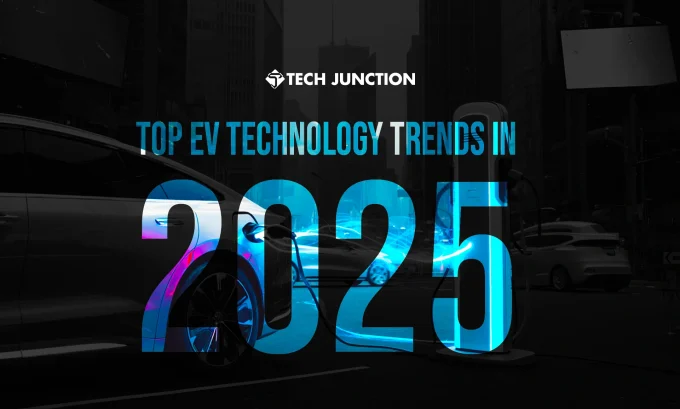As 2025 unfolds, the decentralized finance (DeFi) ecosystem continues to mature at a rapid pace. One of the most notable developments in recent years is the sustained growth of Arbitrum, an Ethereum Layer 2 scaling solution built on optimistic rollups. Its popularity stems from its ability to deliver fast, low-cost transactions while maintaining the security and decentralization of the Ethereum mainnet.
With the surge in user activity and dApp development on Arbitrum, the demand for efficient, secure, and user-friendly bridges has grown significantly. Cross-chain bridges play a critical role in enabling the transfer of assets between different blockchains, making them essential tools for users who wish to interact with Arbitrum’s thriving ecosystem. Whether you’re transferring tokens from Ethereum, BNB Chain, Avalanche, or other networks, having access to the right bridge can greatly influence your user experience.
In this article, we’ll explore the top crypto bridges to Arbitrum for 2025. These bridges were chosen based on factors like speed, security, ease of use, and support for multiple blockchains. We’ll begin with Defiway, which has quickly become one of the most trusted and feature-rich options for bridging to Arbitrum.
1. Defiway Bridges
Defiway has emerged as a standout bridge for users looking to transfer assets to Arbitrum seamlessly. Known for its intuitive user interface and commitment to security, Defiway combines innovation with user-centric features that make it ideal for both newcomers and seasoned DeFi participants.
One of Defiway’s strengths is its support for a wide range of blockchains, allowing users to bridge assets from Ethereum, BNB Chain, Polygon, Avalanche, Fantom, and more directly to Arbitrum. The platform uses smart routing to ensure transactions are processed at optimal speeds and costs. Additionally, Defiway incorporates strong security measures, including multi-signature wallets and audited smart contracts, providing peace of mind for users moving significant amounts of crypto.
In 2025, Defiway continues to be one of the most reliable and future-ready bridges thanks to its ongoing updates and responsive development team. It’s a top choice for anyone looking to participate in the Arbitrum ecosystem.
2. Hop Protocol
Hop Protocol is one of the earliest and most trusted native bridges to Arbitrum. It focuses specifically on Layer 2 solutions, making it ideal for users bridging from Ethereum mainnet or between different L2s like Optimism and Polygon.
Hop’s unique architecture utilizes AMM-style liquidity pools to facilitate near-instant token swaps across chains. This system reduces wait times and allows for faster confirmations, especially compared to traditional bridging methods that rely on long finality periods.
In 2025, Hop has improved its user experience by introducing smoother interfaces, expanded token support, and more efficient gas usage. It remains a favorite among DeFi power users who frequently move assets across Ethereum Layer 2 networks.
3. Synapse Protocol
Synapse Protocol is another major player in the cross-chain bridge market. Known for its robust infrastructure and versatility, Synapse allows users to bridge not only to Arbitrum but also to numerous other Layer 1 and Layer 2 networks.
What sets Synapse apart is its comprehensive token support and innovative bridging mechanics that combine liquidity pools with smart contract interoperability. The protocol supports a wide range of stablecoins, governance tokens, and DeFi assets.
By 2025, Synapse has cemented its position as a go-to bridge for traders, liquidity providers, and NFT users alike. It is particularly well-suited for users transferring stablecoins or engaging in yield farming opportunities on Arbitrum.
Read More: Top Tech Trends 2025 to Watch
4. Across Protocol
Across Protocol offers a fast, affordable, and secure way to bridge assets to Arbitrum. It uses a relayer-based system backed by a dispute mechanism that ensures high security while delivering swift transactions.
Designed with speed in mind, Across is especially useful for small-to-medium-sized transfers that require minimal delay. Its liquidity is supplied by relayers, who are incentivized to provide efficient service through fees and penalties for dishonest behavior.
In 2025, Across continues to stand out for its gas-efficient architecture and growing community support. It’s an excellent choice for users looking to avoid high fees while benefiting from a secure and rapidly expanding bridge network.
5. Stargate Finance
Stargate Finance brings a new level of composability and simplicity to cross-chain bridging. Built on LayerZero, Stargate allows for native asset transfers with minimal slippage and near-instant finality.
What makes Stargate particularly attractive in 2025 is its deep liquidity pools and integration with numerous DeFi platforms. Users can bridge stablecoins, ETH, and other assets to Arbitrum while earning yield through liquidity provision.
Stargate is a powerful option for DeFi users looking for a one-stop solution that combines bridging, farming, and staking — all while leveraging the strengths of the LayerZero ecosystem.
6. Celer cBridge
Celer Network’s cBridge has become a trusted name in the bridging space due to its high throughput and low latency. It supports transfers across 40+ blockchains, including Arbitrum, and offers a user-friendly interface that appeals to both beginners and experienced users.
Celer uses a mix of liquidity provision and node relaying to achieve fast and reliable transactions. In addition to its bridging capabilities, Celer has introduced security enhancements such as adaptive routing and fallback modes to ensure consistent uptime.
As of 2025, cBridge continues to expand its reach and functionality, making it a dependable choice for anyone seeking a versatile bridge to Arbitrum.
7. Orbiter Finance
Orbiter Finance is designed specifically for transferring ETH and a limited number of other tokens between Ethereum and its Layer 2 counterparts, including Arbitrum. Its simplicity and speed have made it a popular bridge for users who prioritize quick, single-asset transfers.
Orbiter uses a peer-to-peer architecture that allows transactions to be confirmed in just a few minutes. While it may not support as many tokens as other bridges, its niche appeal lies in doing one thing extremely well — fast ETH bridging with low fees.
In 2025, Orbiter remains a lightweight yet powerful tool for users frequently moving ETH to Arbitrum for trading, gas funding, or liquidity provision.
8. Multichain (formerly Anyswap)
Multichain has grown into a comprehensive cross-chain protocol that supports over 70 blockchains, including Arbitrum. It functions as both a bridge and a router, facilitating complex asset transfers between networks.
One of Multichain’s key features is its support for non-EVM compatible chains, which allows it to connect Arbitrum with more exotic or emerging ecosystems. Its high TVL and broad user base speak to its credibility and reliability.
Despite occasional criticisms related to UI complexity, Multichain in 2025 remains an essential tool for advanced users looking to move assets across a variety of blockchains, including Arbitrum.
9. Binance Bridge
Binance Bridge allows users to move assets between Binance Smart Chain (BNB Chain) and Ethereum-compatible networks like Arbitrum. Although somewhat limited in scope, its deep integration with the Binance ecosystem makes it a convenient option for users who hold assets on Binance or use the Binance Wallet.
By 2025, Binance Bridge has improved its accessibility through better wallet support and simplified transaction flows. It’s a useful bridge for those involved in centralized exchanges who want to interact with Arbitrum’s DeFi protocols.
10. ChainPort
ChainPort is a lesser-known but steadily growing bridge that prioritizes security and ease of use. With features like multi-layer security audits and cold wallet integrations, it appeals to institutions and security-conscious users.
ChainPort supports transfers to Arbitrum with quick finality and minimal technical knowledge required. Although it’s not as widely adopted as other bridges, its transparent fee model and active support team make it a respectable contender in 2025.
Conclusion: Choosing the Right Bridge to Arbitrum in 2025
With Arbitrum solidifying its position as one of the leading Ethereum Layer 2 networks, having access to reliable and efficient bridges is more important than ever. The ideal bridge for your needs depends on factors like which blockchain you’re bridging from, the type of assets you want to transfer, how much security you require, and your tolerance for fees and transaction speeds.
Defiway stands out in 2025 as a comprehensive and highly usable bridge that balances speed, security, and flexibility. However, alternatives like Hop Protocol, Synapse, and Across offer their own unique advantages that may better suit specific user cases.
Whether you’re a DeFi enthusiast, NFT collector, trader, or developer, using the right bridge can significantly enhance your experience on Arbitrum. With the continued evolution of cross-chain technology, we can expect even more user-friendly, efficient, and secure bridges to emerge — making decentralized ecosystems more interconnected than ever before.
The Tech Junction is the ultimate hub for all things technology. Whether you’re a tech enthusiast or simply curious about the ever-evolving world of technology, this is your go-to portal.















